While Carnival may be over, Shrove Tuesday inspired me to explore options beyond pancakes or doughnuts. Europe is home to a variety of captivating desserts with intriguing names, engaging the senses through its appearance, taste, aroma, and presentation.
Whenever I travel, I make it a point to explore pastry shops and uncover desserts with intriguing names and stories. This experience allows me to connect more with locals and gives me unique insights into a country’s history, culture, and creativity.
A sweet journey around Europe
In this guide, I will explore the most captivating desserts found in France, Italy, and Spain with rich history, unique flavour and cultural significance. I will look into the story of the dessert, interesting facts and the recommended pastry shops to try them.
Paris-Brest. When pastries and sport are a perfect match.
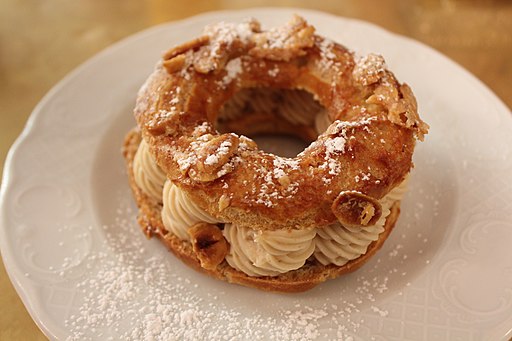
French desserts are often considered the best because the rich culinary tradition of royal cuisine eventually became accessible to the masses, influencing the quality and diversity of desserts available in France
Paris Brest was created by the pastry chef Louis Durand in 1910. The dessert’s circular shape resembles a bicycle wheel, paying homage to the cyclists who participated in the Paris-Brest bicycle race.
Durand designed it as a portable snack for cyclists, featuring a ring of choux pastry filled with praline-flavored cream. The Paris-Brest was invented in Pâtisserie Durand, in the city of Maisons-Laffitte, just outside Paris.
The Paris-Brest, a classic French pastry, comes in various delightful variations, including filled with praline-flavored cream or a decadent chocolate cream. Each variation offers a unique twist on the original choux pastry ring, showcasing the creativity of French pastry chefs.
It’s typically served as individual pastry portions, sliced and plated for individual consumption. It is often enjoyed as a dessert or treat alongside a cup of coffee or tea.
The fusion versions of Paris-Brest may include innovative twists such as matcha-infused cream, yuzu-flavored choux pastry, or even a savory interpretation with ingredients like foie gras or truffle-infused cream
Opera Cake. A sophisticated cake that resembles Parisian Palais Garnier
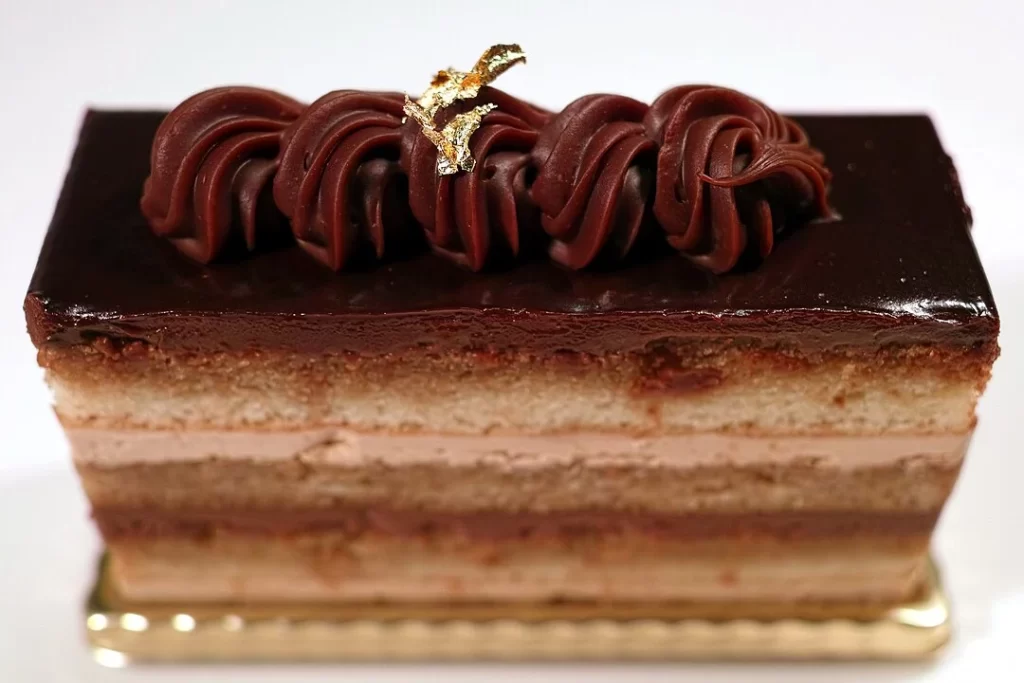
Several characters, including Michael Corleone, famously enjoy cannoli in the iconic film “The Godfather.”
The rectangular cake, renowned globally, consists of three layers of Joconde almond-flavored sponge soaked in coffee syrup, topped with coffee buttercream and chocolate ganache, and finally covered with a rich, dark chocolate icing.
The popular French variations of opera cake feature layers of almond sponge cake soaked in coffee syrup, chocolate ganache, and coffee buttercream, creating a rich and indulgent dessert. Pastry chefs often top these decadent cakes with a shiny chocolate glaze and adorn them with gold leaf or intricate chocolate decorations for added elegance.
However, variations of opera cake could potentially be adapted into smaller portions to be served as petit fours in certain contexts.
The butter cake – Kouign Amman
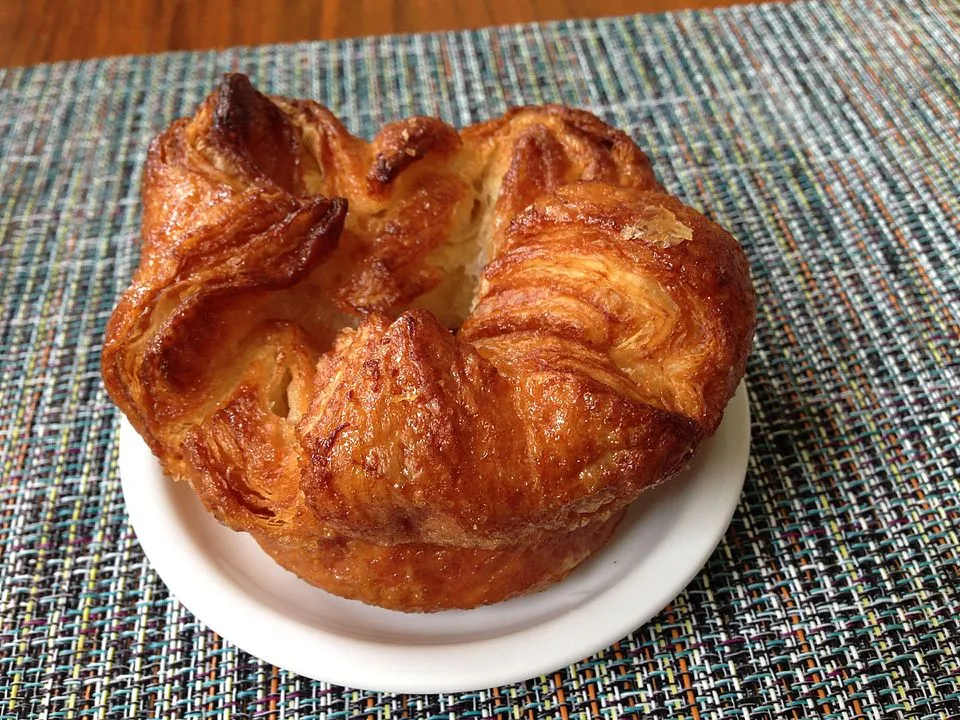
Originating from Brittany, France, Kouign Amann has a rich history dating back to the 19th century. French bakers created it. The name “Kouign Amann” comes from the Breton language, roughly translating to “butter cake” or “butter bread” in English. This delectable pastry, known for its buttery, caramelized layers, hails specifically from the city of Douarnenez.
It’s better to try Kouign Amann warm to enhance its buttery, caramelized flavors. It creates a delightful contrast between the crispy exterior and soft interior. Desserts in Brittany are often very sweet, owing to traditional ingredients like butter, sugar, and caramelized flavors.
Variations of Kouign Amann in Brittany include different fillings, such as fruit, chocolate, or even savory ingredients like cheese. For an authentic experience, try Kouign Amann from La Maison du Kouign Amann in Concarneau at their flagship bakery.
Cannoli. “Leave the gun, take the cannoli.”
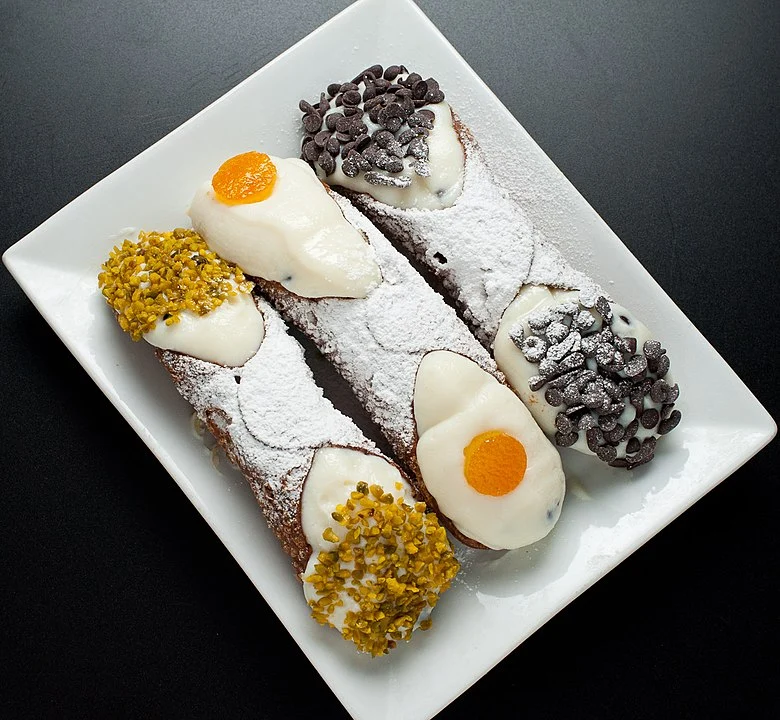
Several characters, including Michael Corleone, famously enjoy cannoli in the iconic film “The Godfather.
The name “cannoli” originates from Sicily, Italy, deriving from the Latin word “canna,” meaning “tube,” referencing the pastry’s shape, with a rich history tracing back to Arab rule.
These iconic Italian desserts have evolved over centuries, and the best way to savor them is by visiting the renowned I Segreti del Chiostro. This pastry shop is nestled within the Santa Caterina monastery, offering authentic and delicious cannoli.
Sicilians often enjoy cannoli as a traditional dessert during festive occasions and celebrations, such as weddings, festivals, and religious holidays. It is particularly popular during Carnival season, especially on Mardi Gras, as well as during the Easter holiday.
Popular variations of cannoli include traditional ricotta-filled cannoli, chocolate-dipped cannoli, and variations with added ingredients like pistachios or candied fruit. The American variation of cannoli without ricotta typically features a sweetened cream cheese filling.
Torta Della Nonna. A gem from Tuscany.
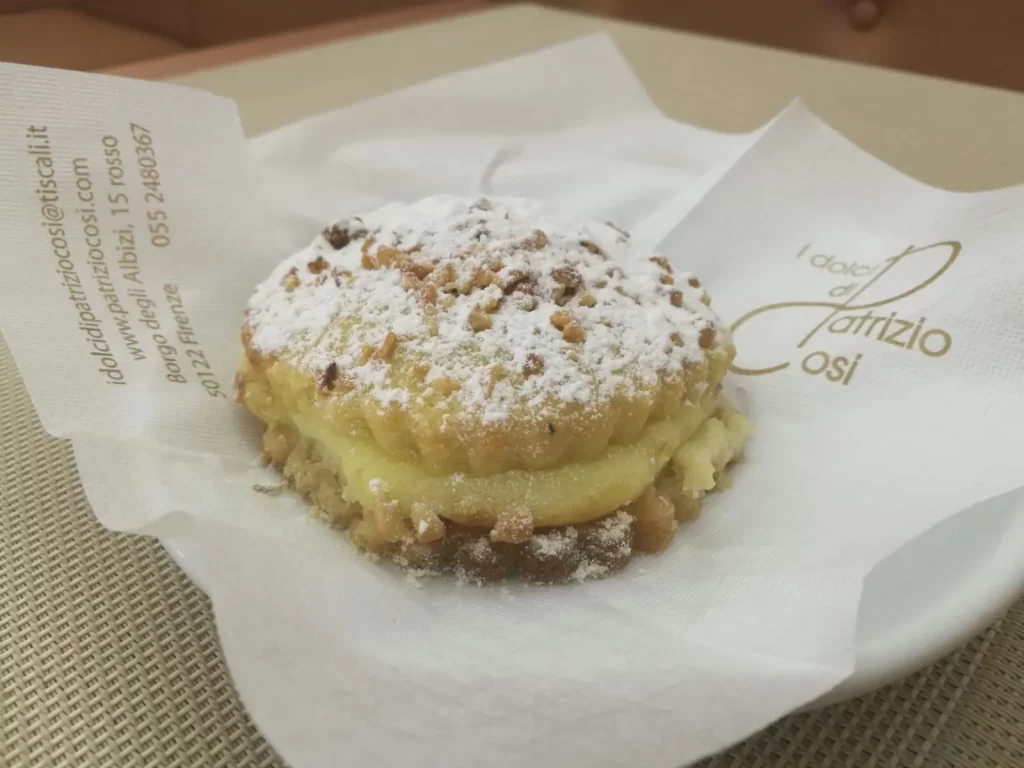
Originating from Florence, Italy, the iconic Torta della Nonna, translating to “Grandmother’s Cake,” holds a rich history. Crafters make this custard tart with sweet shortcrust pastry, Italian pastry cream (crema pasticcera), and adorn it with pine nuts.
Patrons at I Dolci di Patrizio Cosi in Florence enjoy “nonnine del Cosi,” mini Torta della Nonna with artisanal cream. Additionally, the shop offers a chocolate variation called “nonnini,” providing a delightful twist on this traditional treat.
Italian variations of Torta della Nonna include Torta della Nonna alla fiorentina, featuring pastry cream, pine nuts, and powdered sugar.
Pasticciotto. A “small mess” from Puglia.
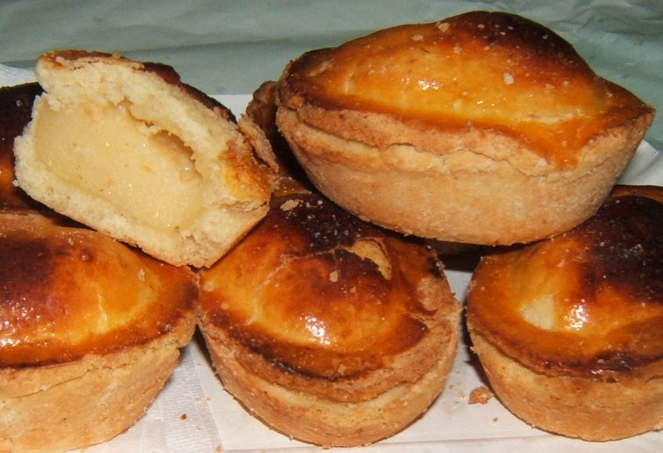
Originating from Lecce in Puglia, Italy, Pasticciotto is a centuries-old pastry enjoyed by locals as breakfast or snack.
The variations of Pasticciotto feature different fillings, ranging from traditional custard cream to modern interpretations with fruit jams or chocolate.
Head to Caffè Alvino for an authentic experience, savoring fresh Pasticciotto straight from the oven.
Sanguinaccio dolce. Chocolate & Blood.
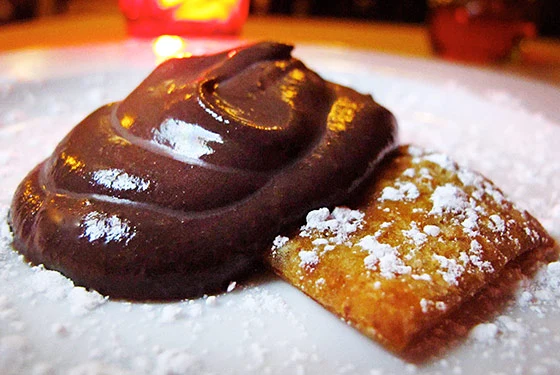
“Sanguinaccio dolce” means “sweet blood pudding” and originates from the Campania region of Italy, particularly Naples. It has a rich history dating back to ancient Roman times. During Carnival season, people typically prepare this traditional dessert using ingredients like chocolate, milk, sugar, and sometimes pig’s blood.
The short shelf life led to banning it across regions in Italy in 1992, requiring slaughtering livestock for fresh blood. Today, the recipe often excludes blood, relying instead on butter and cornstarch to replicate the creamy texture.
Norwegian kvaefjordkake
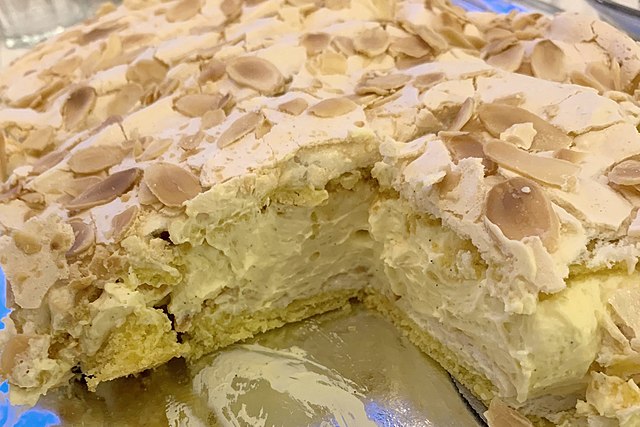
The name “Norwegian kvaefjordkake” originates from the Kvaefjord region in Norway, believed to be the birthplace of this cake. One of the stories says the Kvæfjord cake obtained its name from the two sisters in Kvæfjord, who initially crafted this cake at Café Alliance in Harstad in the 1930s.
Norwegian Kvaefjordkake is prepared at every kind of celebration. It’s made by layering a light sponge cake with custard and whipped cream, topped with a crispy meringue layer and toasted almonds.
For a fully immersive experience, I recommend visiting Refsnes Matglede café in Borkenes to savor the taste of Kvaefjordkake while enjoying the scenic view.
Bolo de bolacha
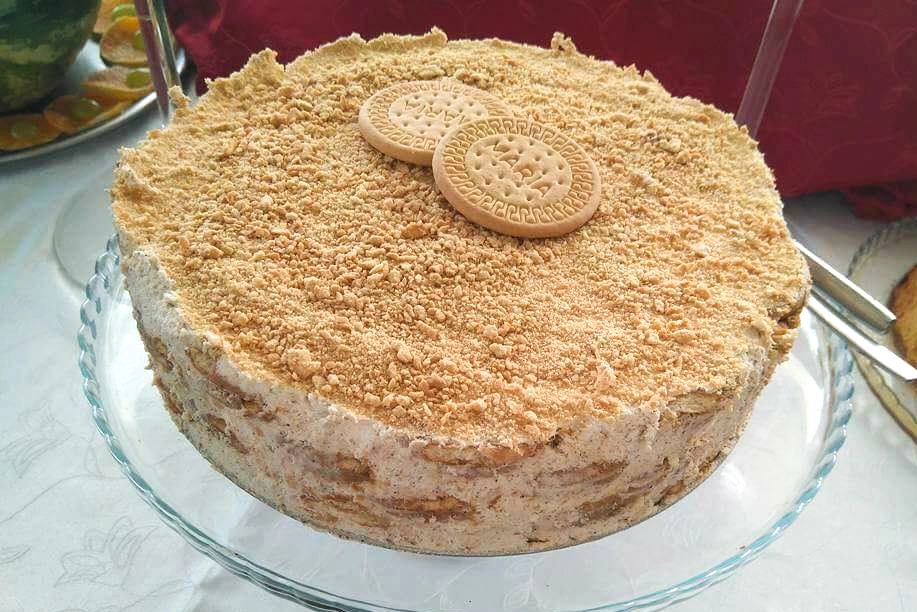
Portuguese sugar production, initially centered in the island region of Madeira and later in the former colony of Brazil, generated such wealth that it earned the nickname “white gold.” This prosperity spurred the development of numerous sweets influenced by monks, Catholic nuns, and artisan bakers who incorporated ingredients like almonds, pumpkin, cinnamon, and even rabbit meat.
The Bolo de Bolacha is the classic childhood dessert that originates from Portugal, particularly from the Lisbon region. The popular dessert, made from Maria biscuits soaked in coffee or syrup, is filled with a creamy mixture. Its exact inventor is unknown due to its traditional nature.
The variations of Bolo de Bolacha include different types of biscuits or cookies, such as Maria biscuits or chocolate wafers, layered with a creamy mixture made of condensed milk, butter, and coffee or cocoa. Traditionally, the filling of Bolo de Bolacha features generous amounts of high-quality butter for its distinctive flavor and creamy consistency, unlike margarine or cream used by some.
Bolo de bolacha is similar to desserts like Tiramisu in Italy, as both feature layers of biscuits soaked in coffee and cream. Other South American desserts with similar characteristics include Tres Leches Cake, Alfajores, Brigadeiros, and Chocotorta.
For an authentic taste experience try Bolo de Bolacha at Ofício – Tasco Atípico in Lisbon where they serve it with toasted white chocolate.
Finnish Blueberry Pie

The story behind the blueberry pie (Mustikkapiirakka), a traditional Finnish blueberry pie, lies in Finland’s forests, where wild blueberries grow during the summer months. Locals have been harvesting these berries for centuries, incorporating them into various dishes. It is not specifically associated with a particular city or region, as it is enjoyed throughout Finland.
The secret of Mustikkapiirakka lies in using fresh, wild Finnish blueberries for their intense flavor and natural sweetness. Additionally, incorporating a touch of lemon zest into the filling enhances the fruit’s brightness. Combine fresh blueberries with sour cream, eggs, sugar, vanilla, and optional cardamom, then spread over the crust.
For an exceptional culinary experience with stunning views, visit Café Regatta in Helsinki and indulge in their delicious blueberry tart.
Tips for fully indulging in immersive, decadent desserts
- Take your time to savor each bite slowly.
- Choose a scenic spot to savor your indulgent dessert.
- Engage all your senses in the experience.
- Pair desserts with complementary local beverages.
- Share the indulgence with friends or loved ones.
